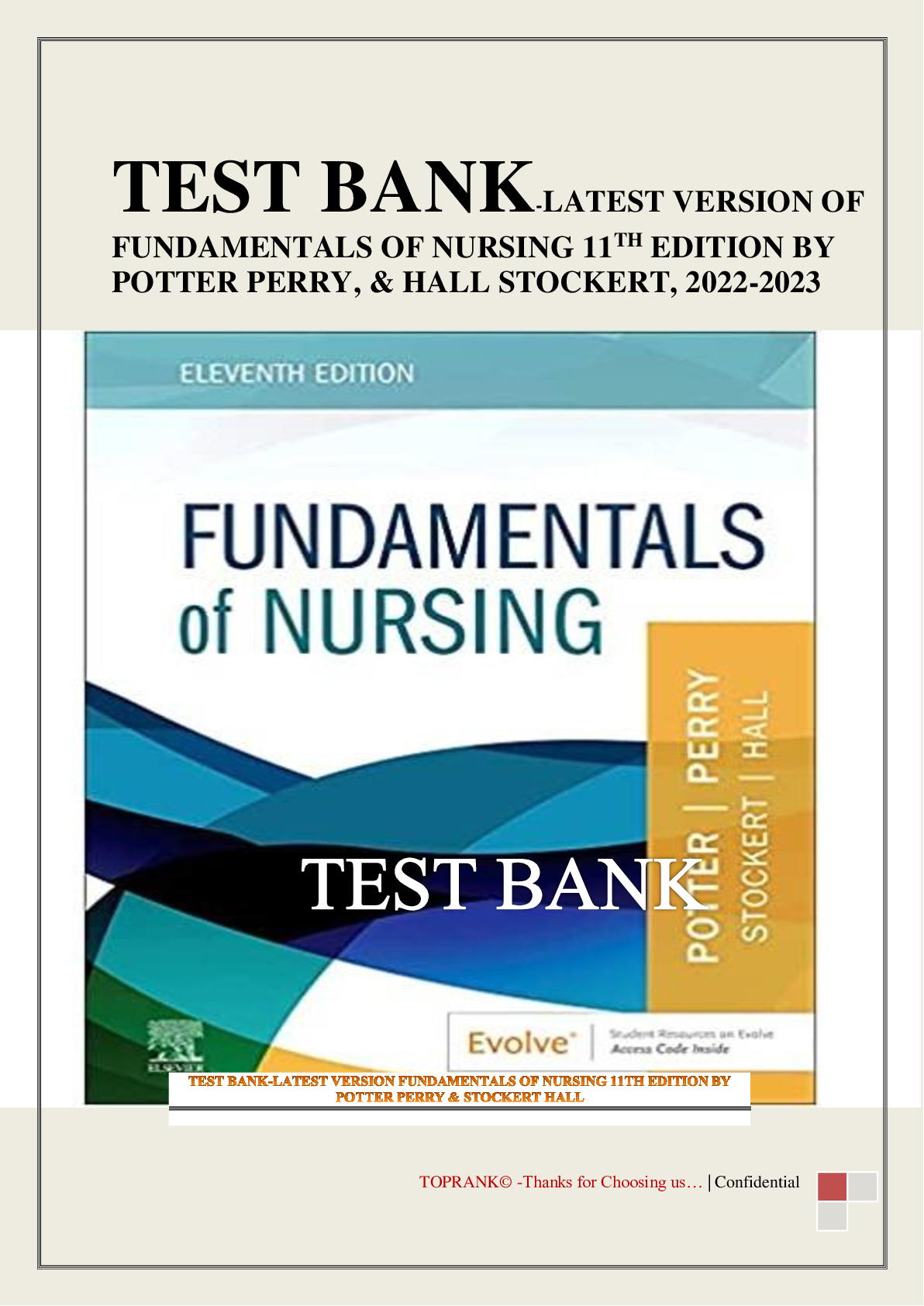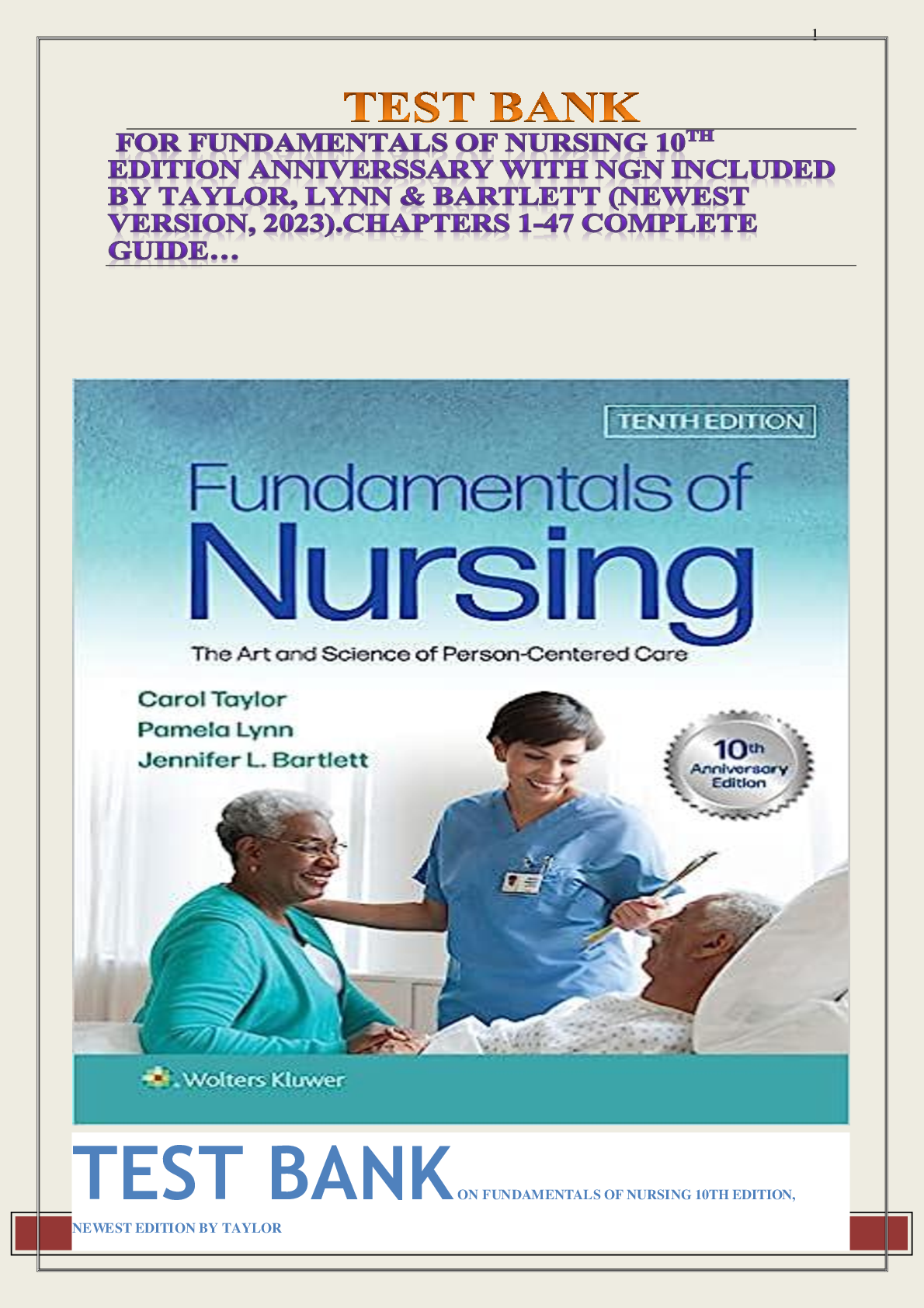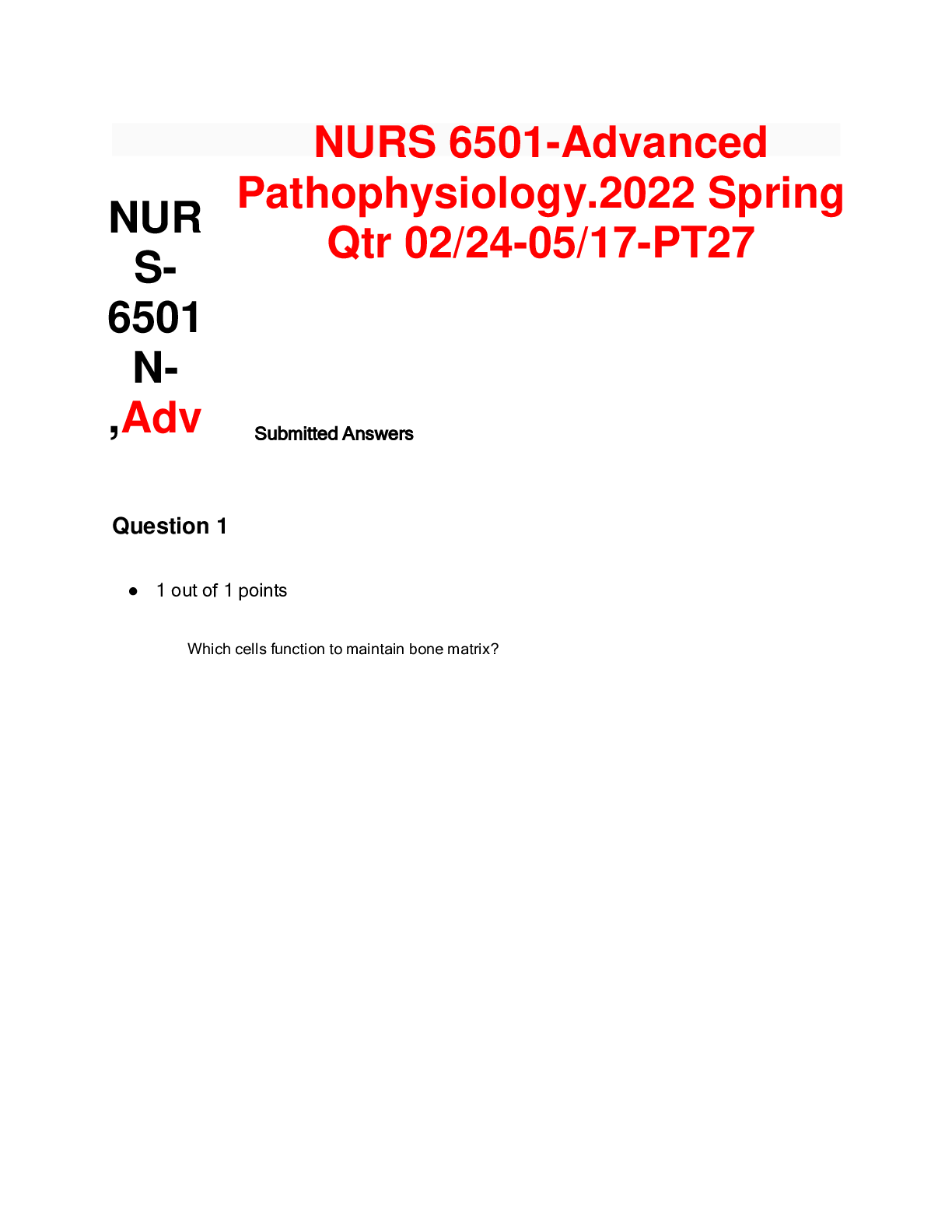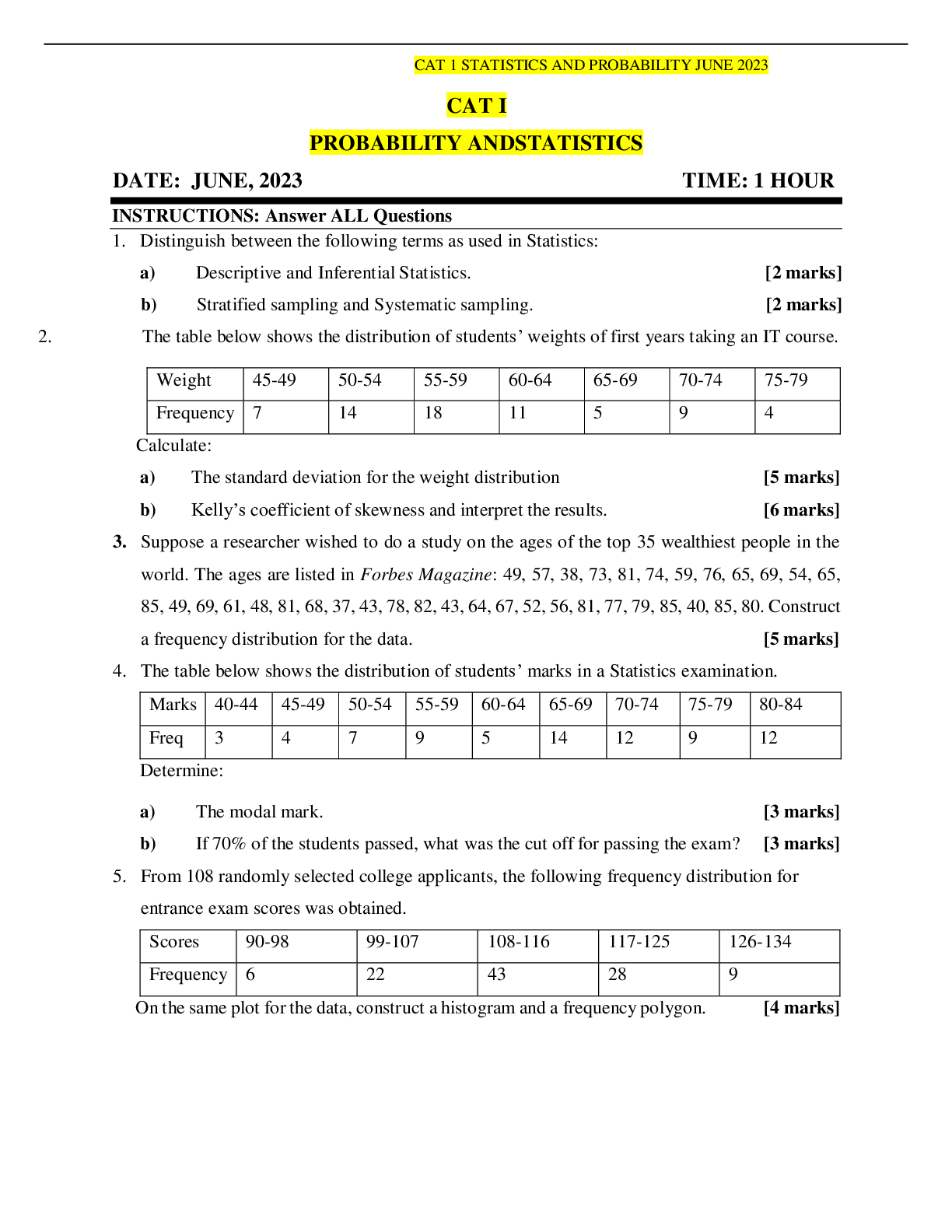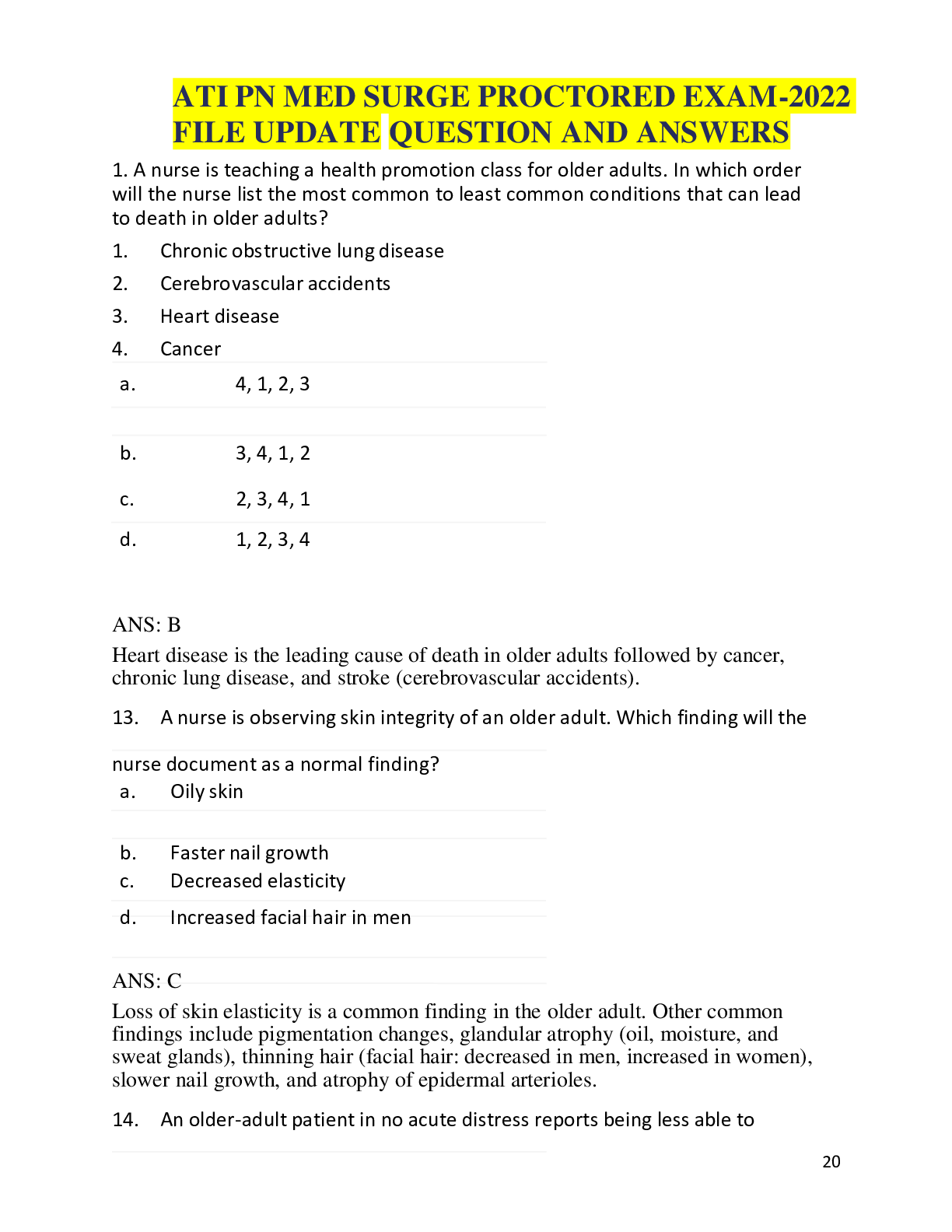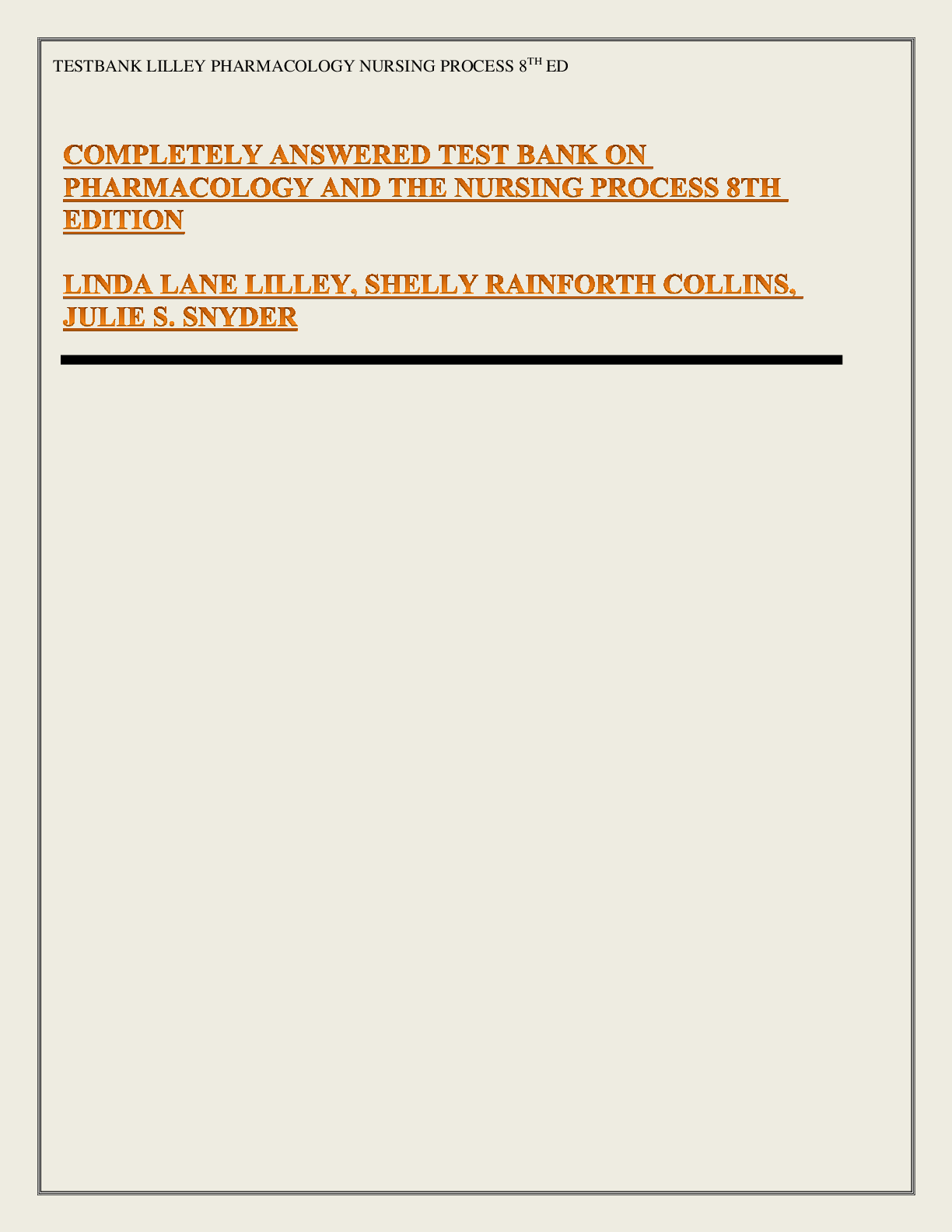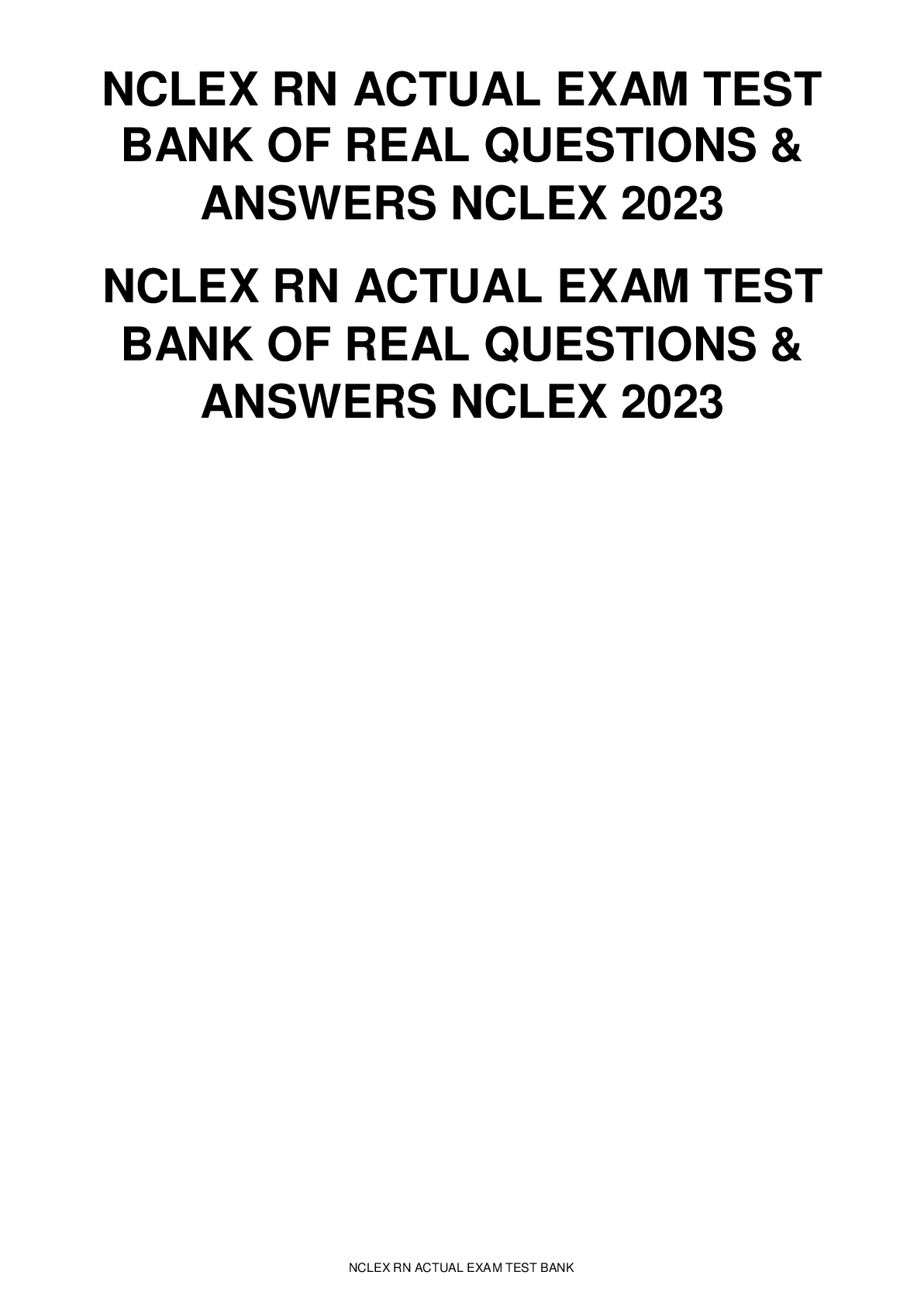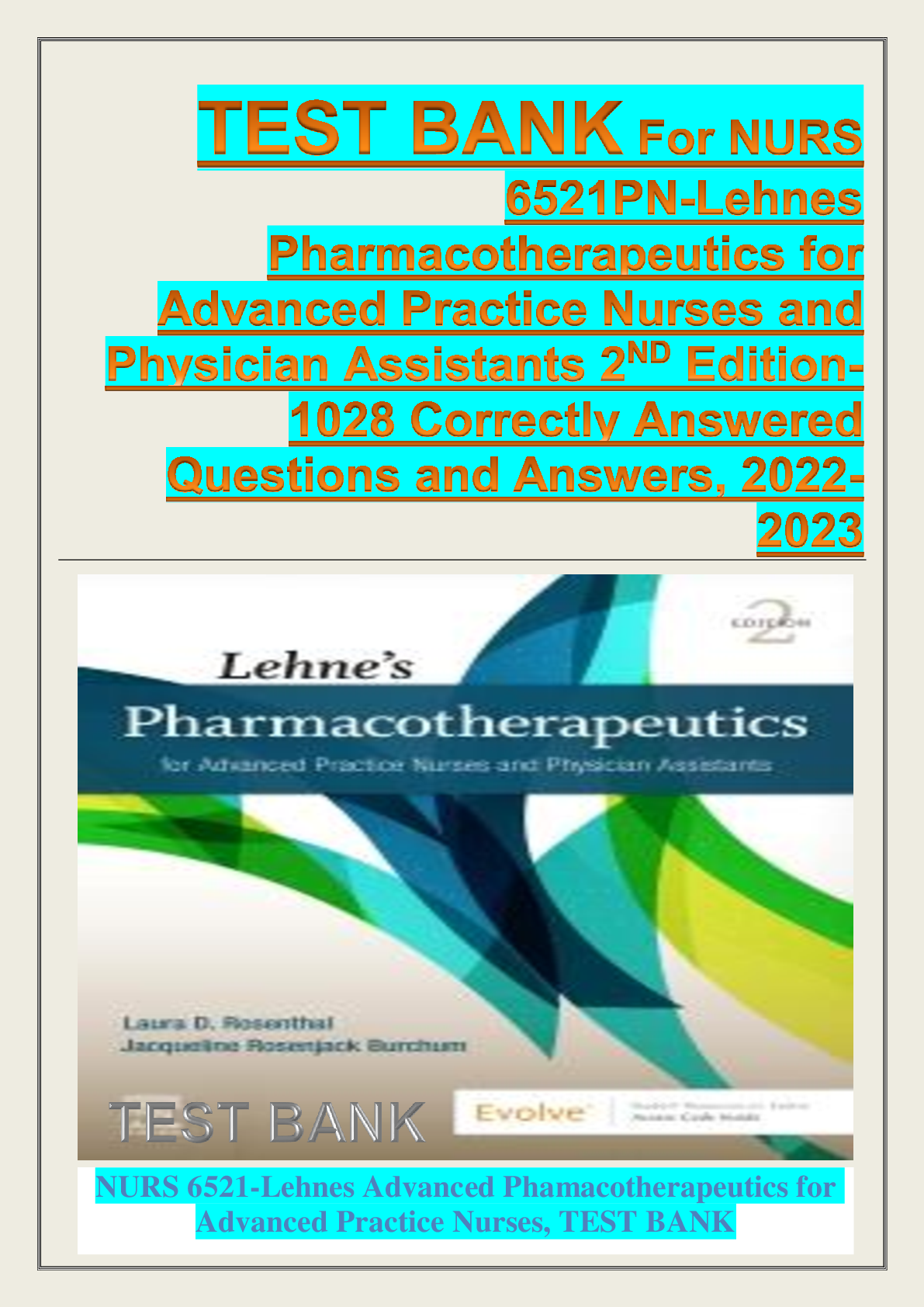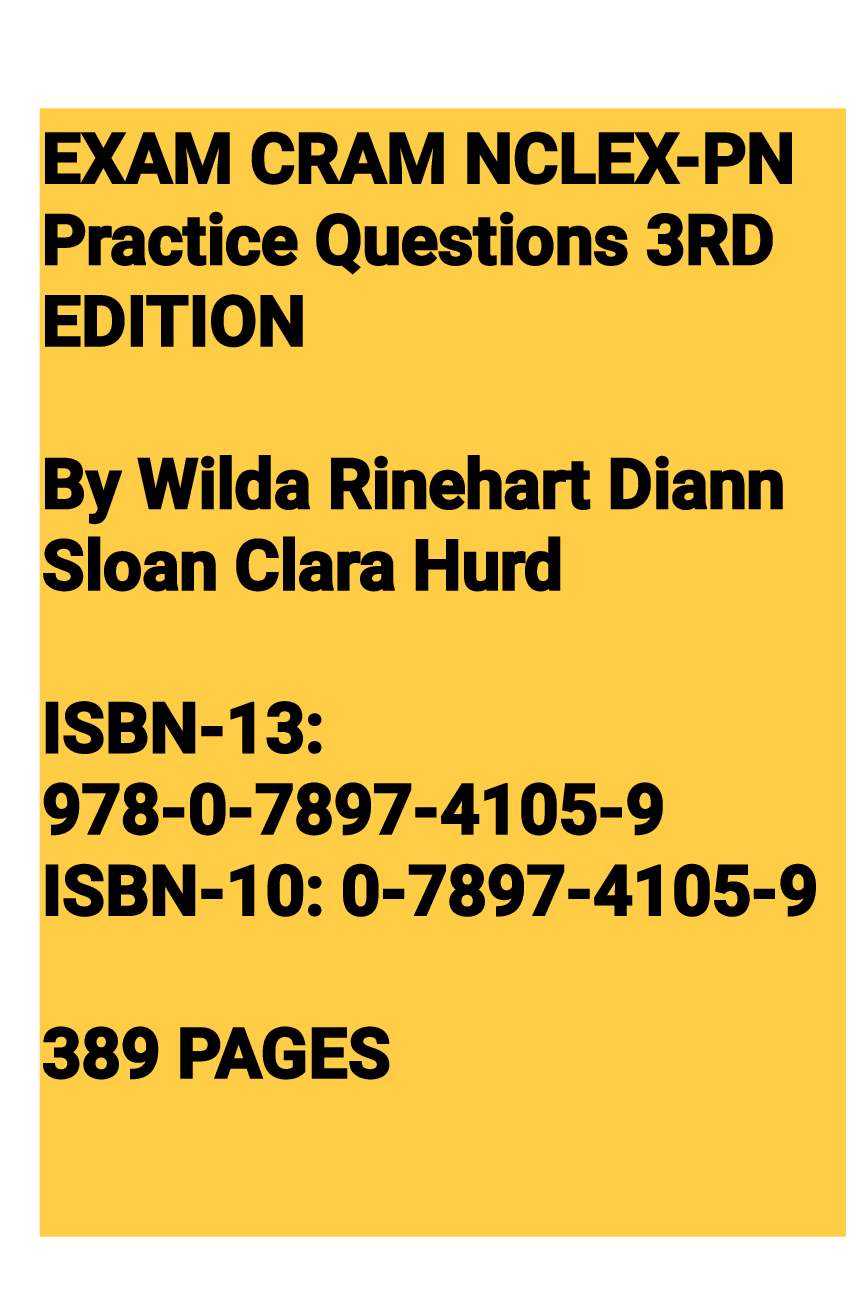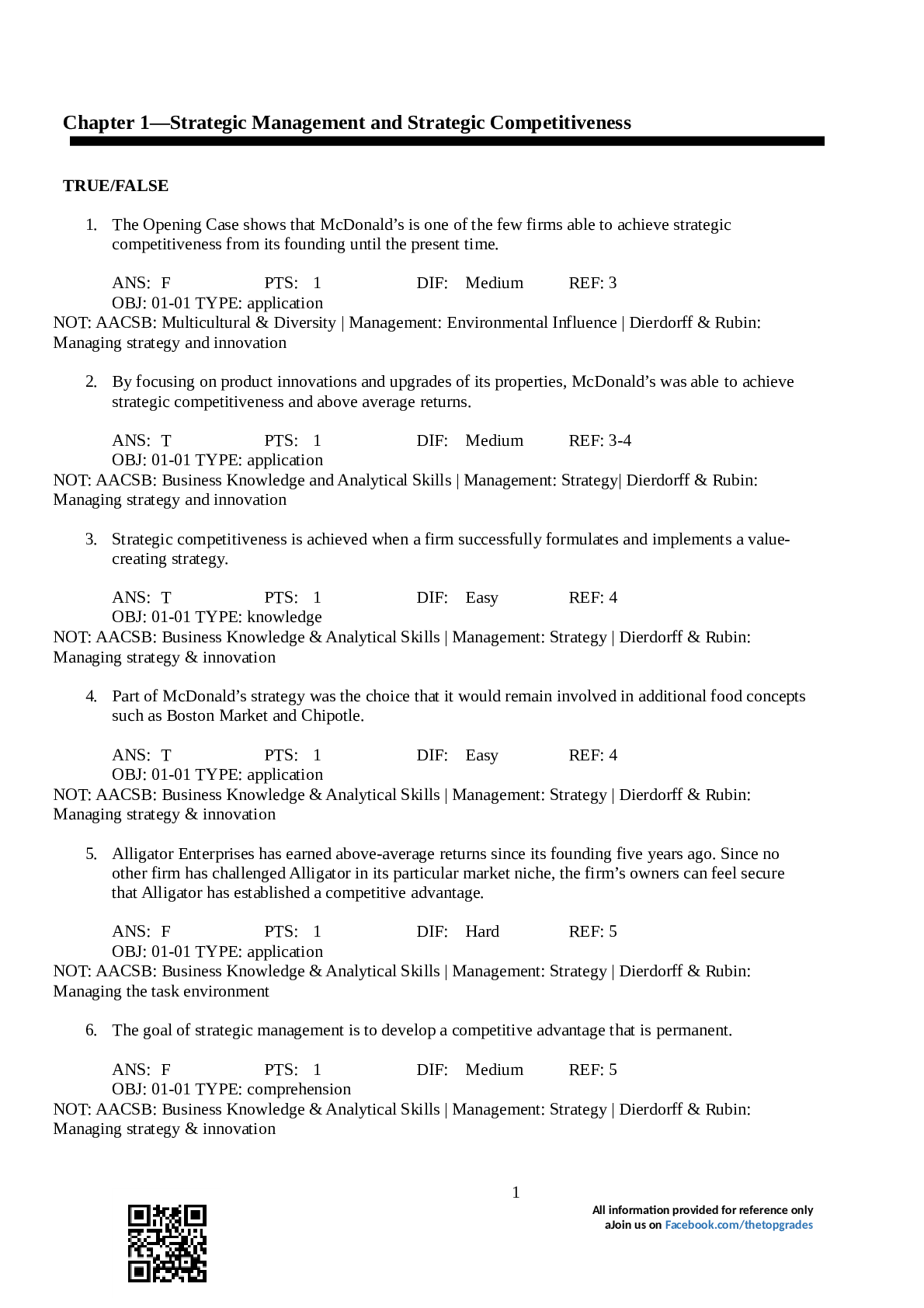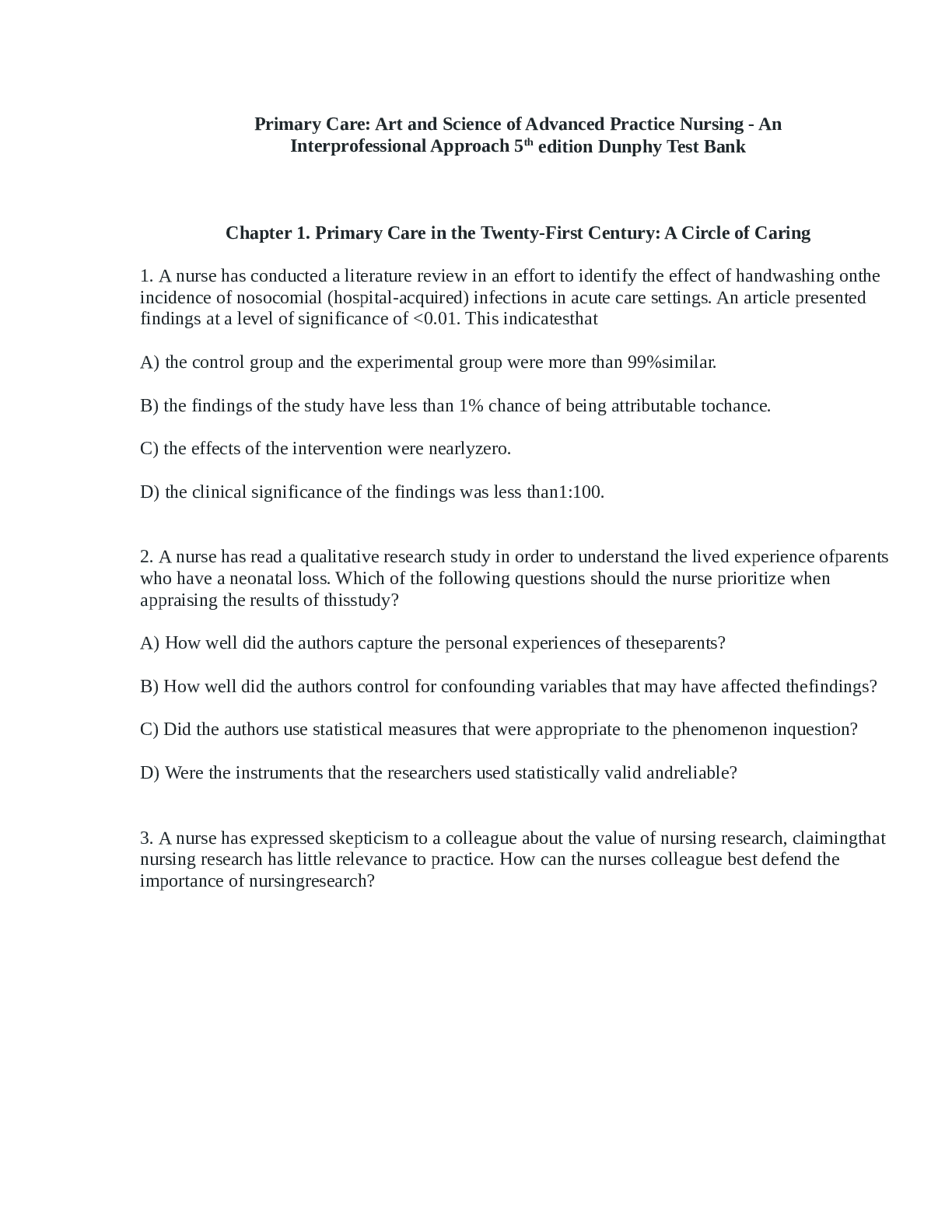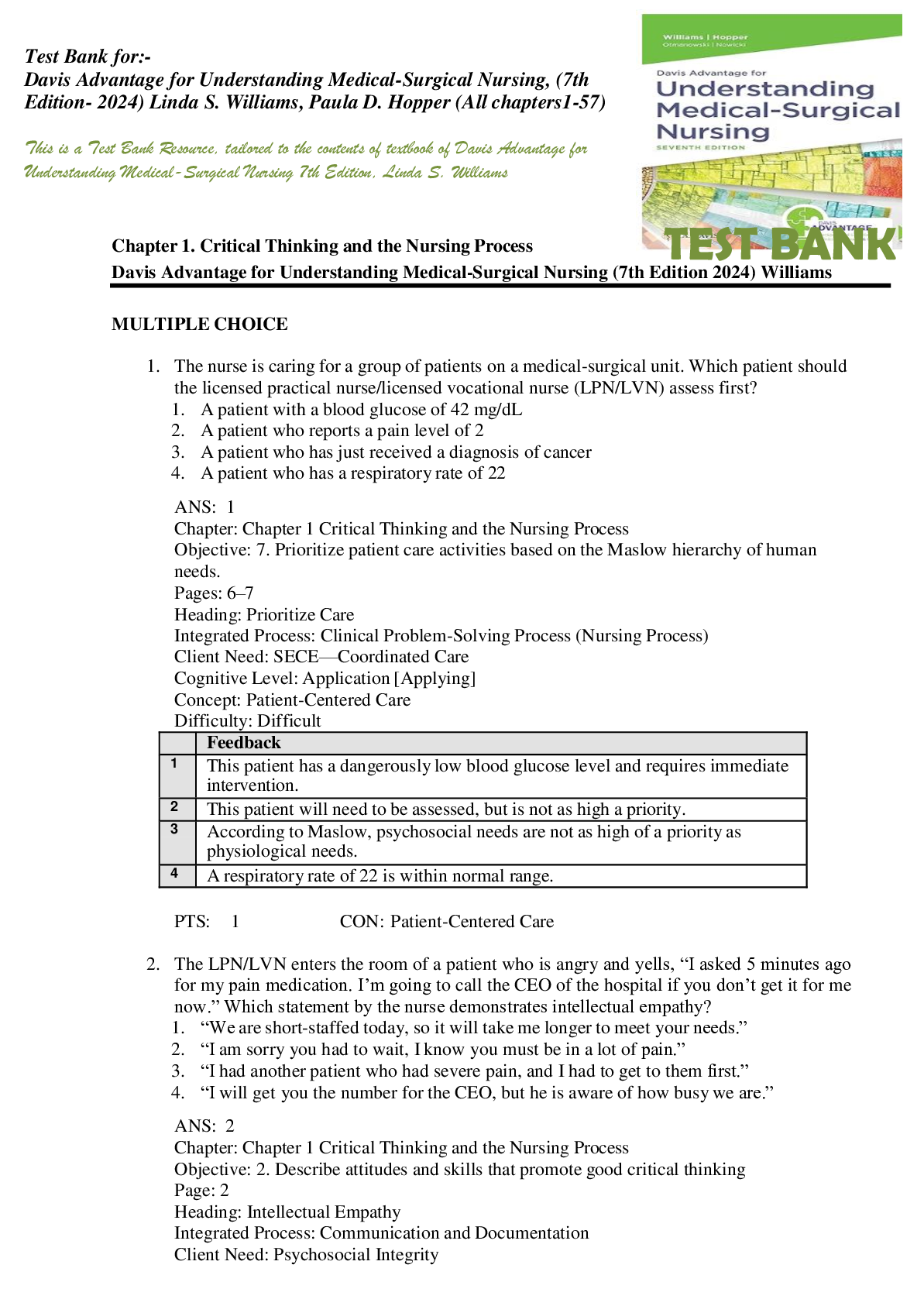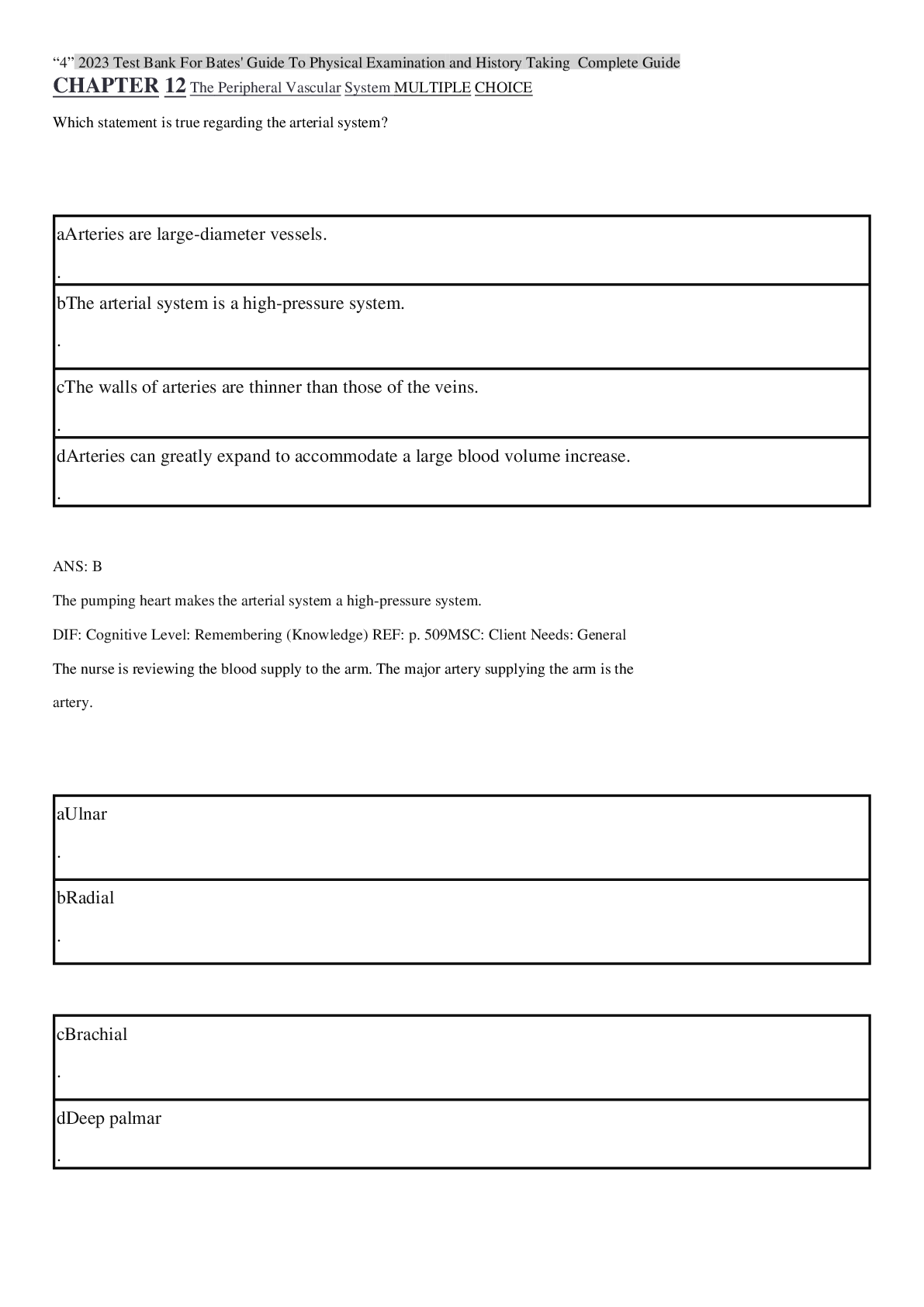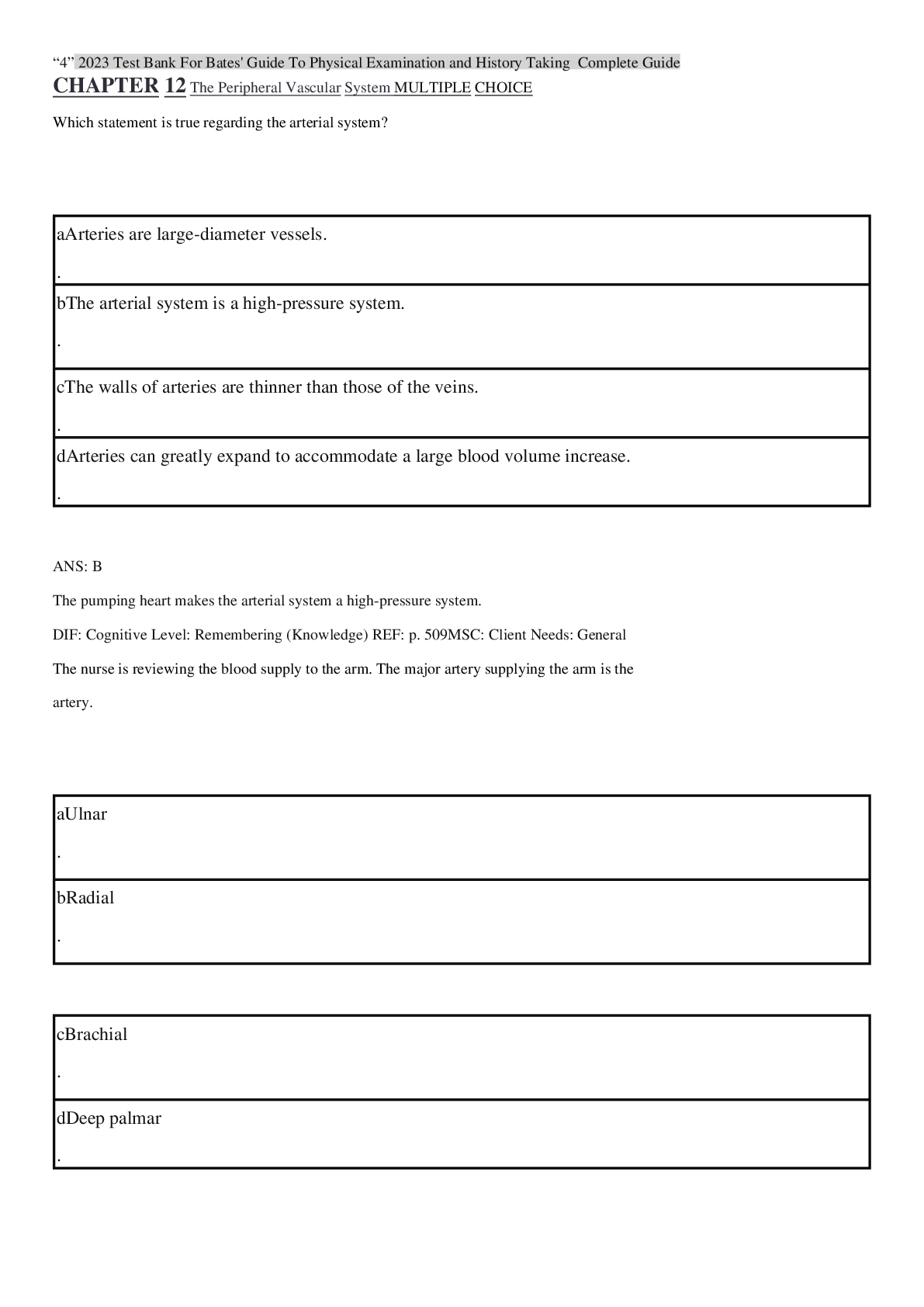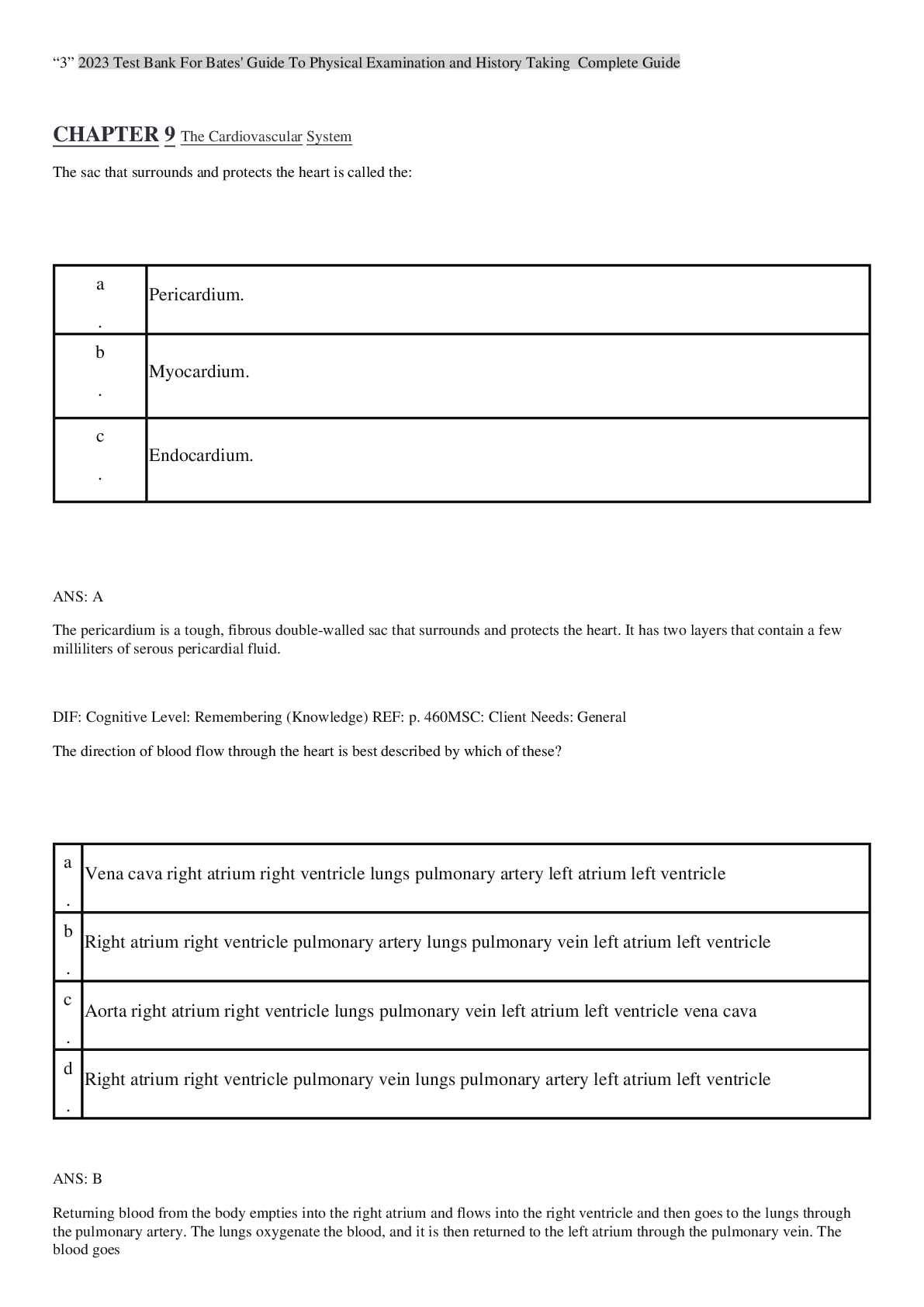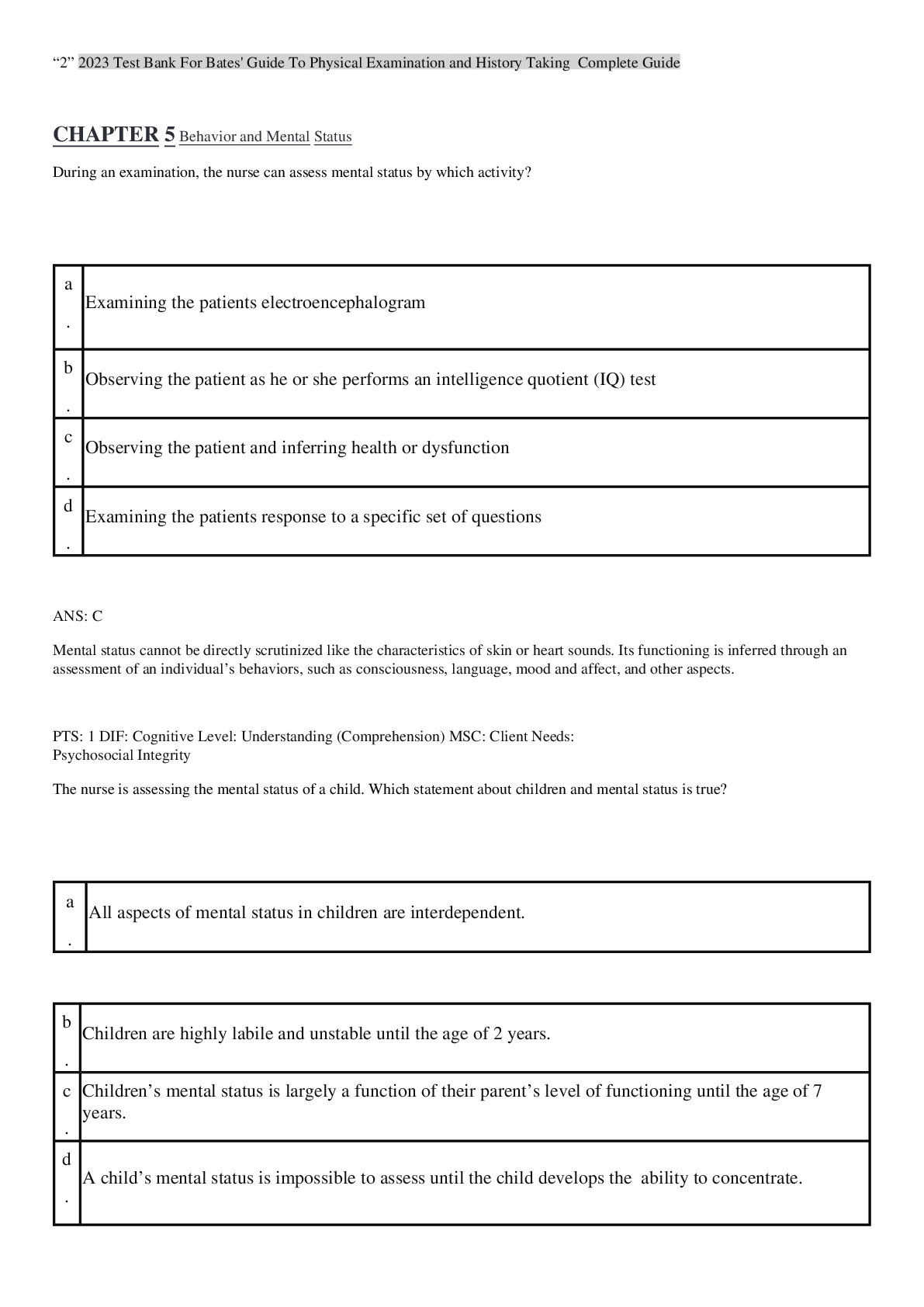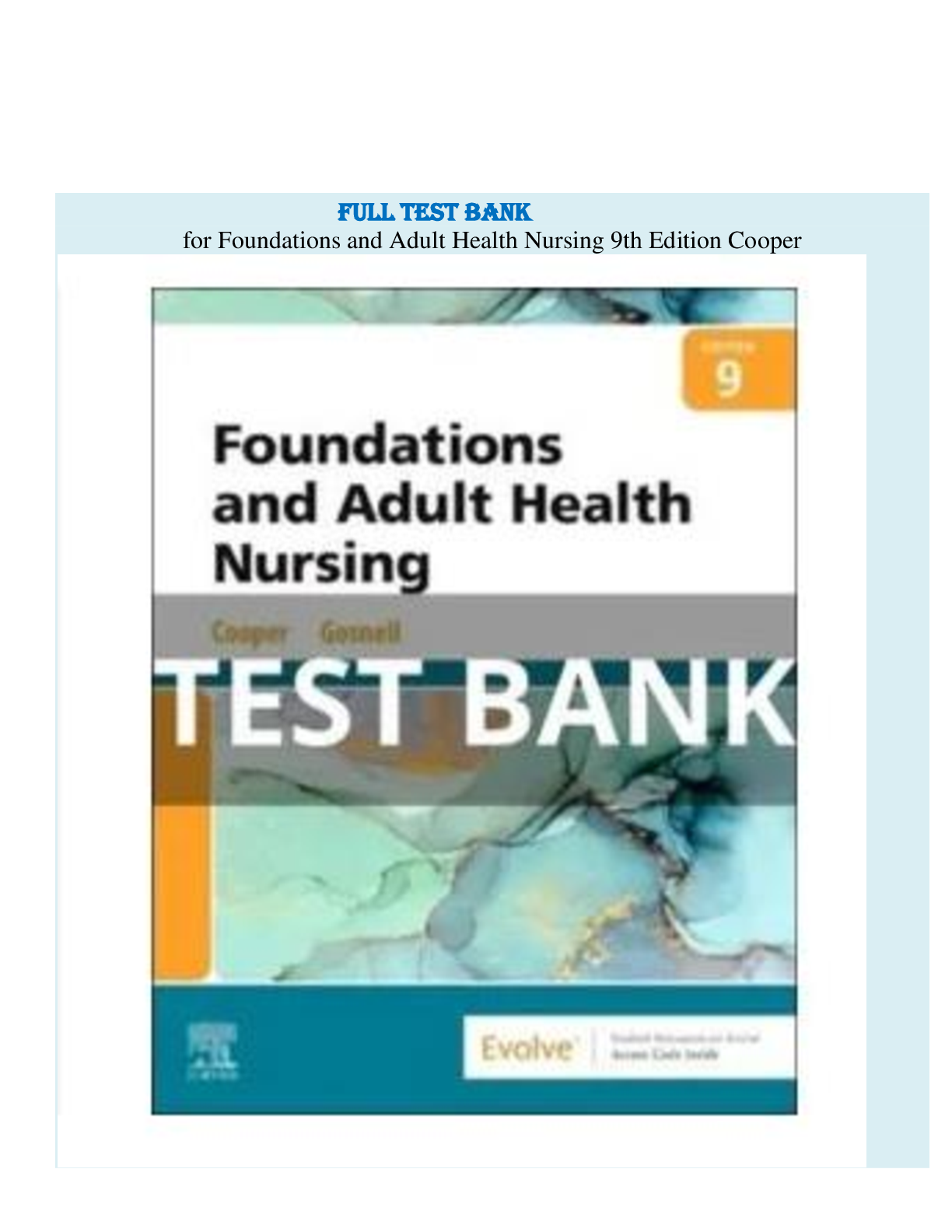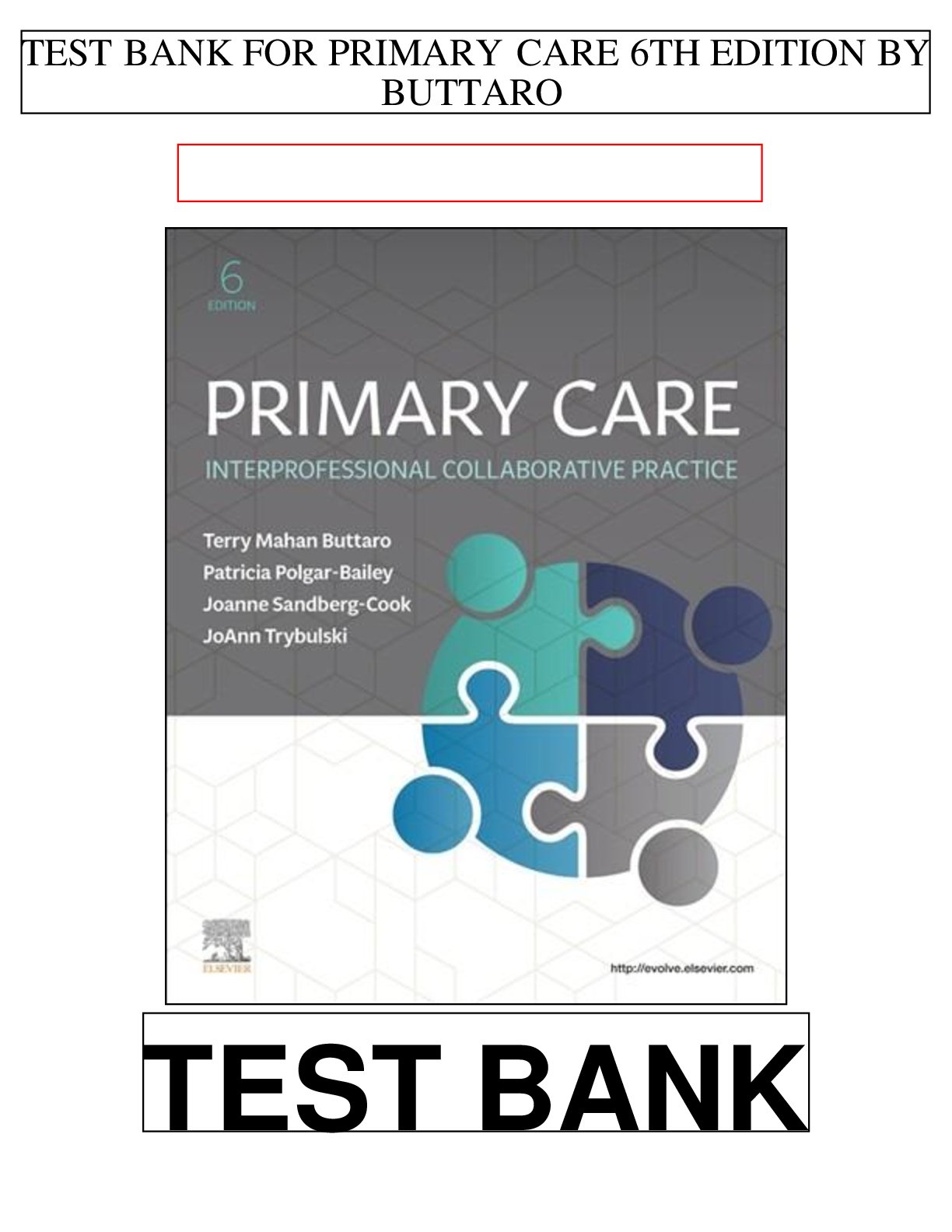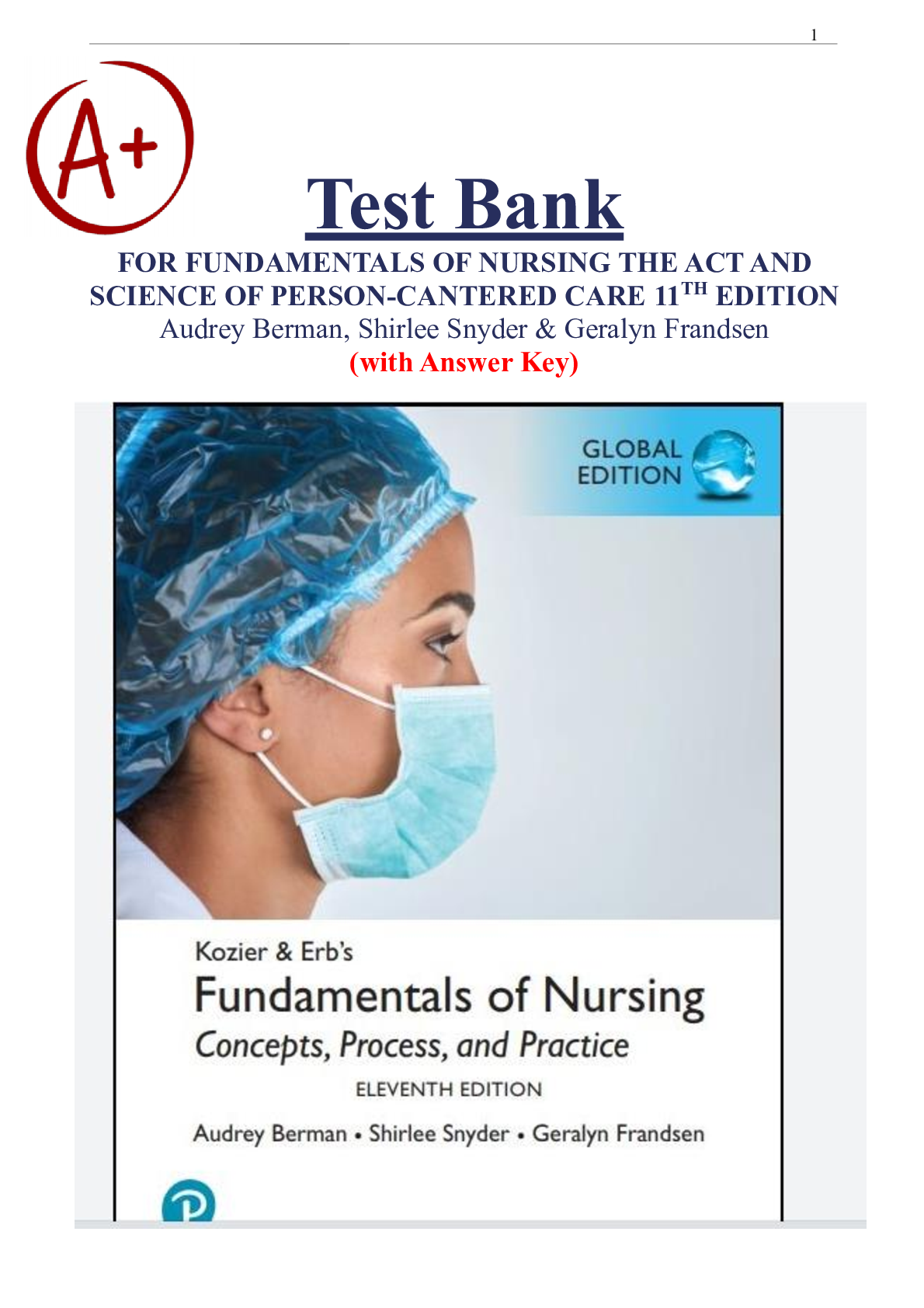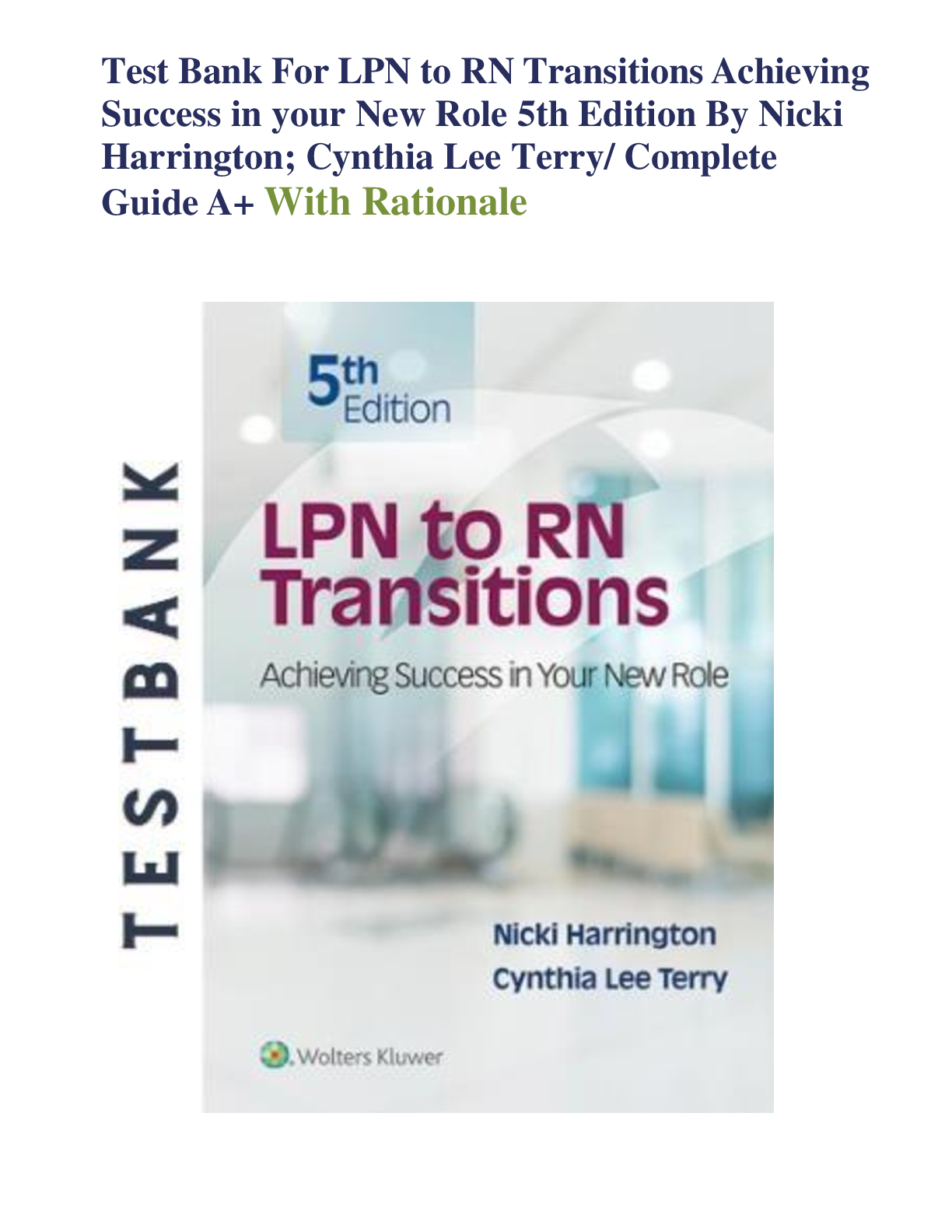PEDIATRIC NURSING > EXAM > A++ Verified TEST BANK For DAVIS ADAVANTAGE for Pediatric Nursing: Critical Components of Nursing 3r (All)
A++ Verified TEST BANK For DAVIS ADAVANTAGE for Pediatric Nursing: Critical Components of Nursing 3rd Edition By Rudd & Kosicko
Document Content and Description Below
Identify the choice that best completes the statement or answers the question. 1. 2. 3. 4. The nurse has provided a presentat... ion to mid dle school children about nursing as a career. One of the children stated that he wanted to be a pediatric nurse, because he wants to take care of babies and little “kids.” What would be an appropriate response to this middle school–aged child? 1. “Nursing is a general practice; all nurses must know how to take care of all ages of patients.” 2. “As a pediatric nurse, you would get to care for babies and little kids as well as children through their teenage years.” 3. “What you are describing is actually a neonatal nurse. Neonatal nurses work with newborn babies, toddlers, and preschool-age children.” 4. “Being a pediatric nurse requires a master’s degree, so be sure to work hard in school!” The medical-surgical float nurse is assigned to the pediatric unit for the first time and states that the skills are “the same as general nursing since children are little adults with smaller bodies.” What component of pediatric nursing contraindicates this statement? 1. Pediatric nursing involves care based on the developmental level of the patient. 2. Pediatric nursing involves the patient’s family in the plan of care. 3. Pediatric nursing in based on prevention of infectious diseases. 4. Pediatric nursing involves cultural sensitivity in patient care. The culturally sensitive pediatric nurse is aware of the racial makeup of the U.S. population. Which of the following reflects the demographics of the U.S. pediatric population in 2018, based on U.S. Census Bureau data? 1. The American Indian and Alaska Native population represent one-fifth of the pediatric population. 2. About half of the children fall in the category of something other than White non- Hispanic. 3. The population of Asian children decreased from 2015 to 2018. 4. There was no change in the population of Non-Hispanic children who represent two or more races between 2015 and 2018. The nurse at a family clinic is providing care to an adolescent patient diagnosed with diabetes. The patient has verbalized discomfort with the feelings of isolation when unable to drink alcohol with their friends. Which of the following would be the most appropriate response to this statement? 1. “Drinking alcohol is not only illegal but dangerous for your blood sugar control and overall well-being.” 2. “You can still drink alcohol, in moderation, if you control the sugar spike with more insulin.” 3. “Prepare for alcohol intake with more water and less carbohydrates before drinking to slow sugar spikes.” 4. “It is understandable that you want to be included, but perhaps we can work out a plan on how to work through those situations.” 5. 6. 7. 8. 9. Which statement best describes the common core concepts of the different models of pediatric nursing? 1. All models focus on the open communication between the child and nurse. 2. All models focus on importance of family relationship to the child. 3. All models focus on safeguarding the child’s dignity during care. 4. All models focus on coordination of care needs that arise during illness. Which of the following tasks is associated with the pediatric medical home care model of pediatric nursing? 1. The nurse refers the family to a childhood cancer support group prior to discharge from the hospital. 2. The nurse includes a simple explanation of the procedure to the child based on the child’s developmental level. 3. The nurse includes the family’s cultural celebrations and observations while providing care to the child. 4. The nurse develops the plan of care with the child and family as the focal point of the interventions. The pediatric nurse begins a research project on 8-year-old patients with the medical diagnosis of pediatric acute-onset neuropsychiatric syndrome (PANS). The family has consented to the research, but as the nurse begins to administer the intervention, the patient refuses to cooperate. What is the appropriate response to this refusal? 1. The nurse should discuss with the family the options of performing the intervention without the child’s knowledge. 2. The nurse should explain to the child that this is necessary and promise a reward at the end of the research project. 3. The nurse should refuse to perform the intervention until the child consents to the intervention and project. 4. The nurse should discuss the pros and cons of the research project with the child and focus on the outcomes. A nurse is providing relationship-based care to a pediatric patient. Which of the following is a challenge the nurse is likely to encounter while using this model of care? 1. Maintaining a sterile field for a procedure with a restless toddler 2. Communicating with the blended family on regular basis 3. Treating children with antibiotic-resistant illnesses 4. Caring for a larger number of children with autism spectrum disorders and childhood depression The pediatric nurse desires to expand his or her career options to become the hospital’s nurse educator of pediatrics. Which of the following is necessary for this nurse to achieve this career goal? 1. The nurse is recommended to earn a minimum of a master’s degree in nursing. 2. The nurse must earn a minimum of a doctorate degree in nursing. 3. The nurse must implement and develop research in nursing practice. 4. The nurse must implement a plan to obtain certification in pediatrics. 10. The school nurse is developing a teaching session for the population of children in a middle school. The nurse has determined that the greatest need for the overall health of the children is promotion of healthy foods. Which of the following interventions is most likely to be effective? 1. Remove all unhealthy snacks from the vending machines. 2. Have a poster contest on healthy eating options. 3. Survey the student population during lunch breaks. 4. Engage the students in healthy choices with cooking lessons. 11. The nurse recognizes the needs of professional development to provide safe and effective care to the pediatric population by attending which of the following courses? 1. Procedure with rationale to administer human papilloma vaccine to the middle school population 2. Study review of the incidence of bullying and intimidation in the elementary school population 3. Demographic study of the U.S. population with regard to cultural diversity and practices 4. How to provide individual health care education for the children without parental interference 12. Which of the following continuing education courses would best enhance the pediatric nurse’s practice in relationship to current trends? 1. Evidence-based practice on improving antibiotic adherence with education to the family unit 2. Evidence-based practice on proper administration of antibiotics for children with autoimmune diseases 3. How to enhance communication with children in regards to adherence to antibiotic use 4. How to decrease instances of exacerbation of infections of children with autoimmune diseases with antibiotics 13. The pediatric nurse is developing interventions for a school-aged child based on the nursing diagnosis of imbalanced nutrition related to a body mass index (BMI) of 37 and poor food choices as evidenced by patient’s mother’s food diary for the family and child’s statements of food preferences. Which of the following would be an appropriate nursing intervention? 1. Provide the child and family with information from https://www.MyPlate.gov for healthy food options. 2. Increase the child’s activity by incorporating the child’s friends into a plan of healthy exercise options. 3. Explain the importance of balancing diet and exercise to prevent obesity to the child and family. 4. Provide information on the increased risk for potential disease processes such as diabetes and hypertension. 14. The nurse is developing interventions for a transgender adolescent based on the nursing diagnosis decreased self-esteem related to transgender identity as evidenced by statements of feeling “worthless, different, and alone.” What would be the most appropriate intervention based on the diagnosis? 1. Give positive feedback on personal choices as appropriate. 2. Provide gender-affirming care to transgender youth. 3. Provide information on support groups for patient and family. 4. Assess risk factors for depression and suicidal thoughts. 15. The pediatric nurse is providing care to an 8-year-old client who has Down’s syndrome and wants to ensure they are providing evidence-based care. Which of the following resources would best offer evidence-based practice guidelines related to the care of this patient? 1. Journal of Specialists in Pediatric Nursing 2. Journal of Child and Adolescent Psychiatric Nursing 3. National Database of Nursing Quality Indicators 4. American Journal of Maternal/Child Nursing [Show More]
Last updated: 9 months ago
Preview 1 out of 358 pages
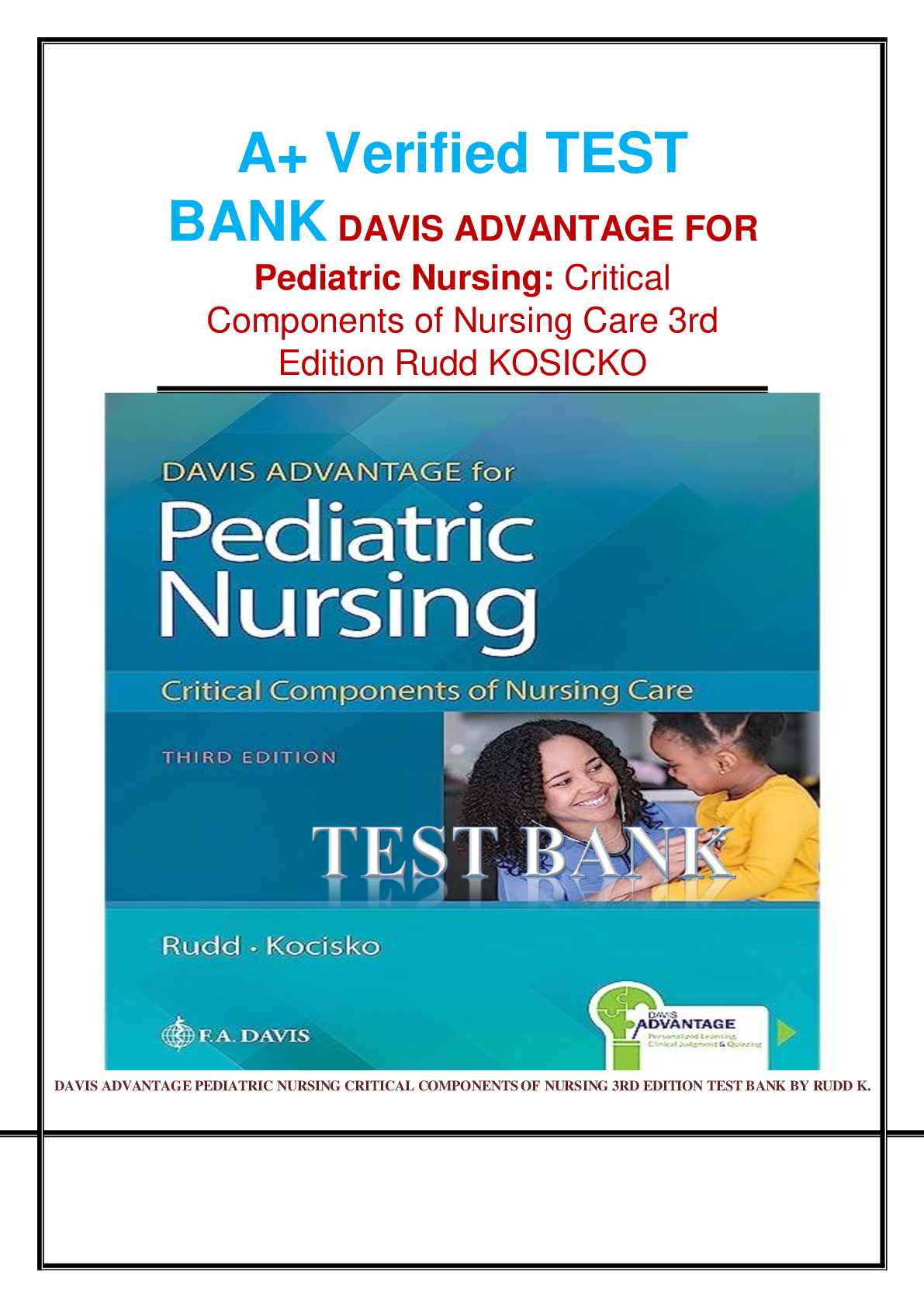
Reviews( 0 )
Document information
Connected school, study & course
About the document
Uploaded On
Jul 15, 2023
Number of pages
358
Written in
Additional information
This document has been written for:
Uploaded
Jul 15, 2023
Downloads
0
Views
43


